In the context of the education sector promoting innovation and improving quality, this policy is even more meaningful as it contributes to ensuring rights, creating motivation for teachers and further investing in the quality of education and training.
Realistic
Recently, the Ministry of Education and Training issued Circular No. 21/2025/TT-BGDDT regulating the regime of paying overtime wages to teachers in public educational institutions (Circular 21). This Circular replaces Joint Circular No. 07/2013/TTLT-BGDDT-BNV-BTC dated March 8, 2013 (Circular 07) guiding the implementation of the regime of paying overtime wages to teachers.
According to many teachers, compared to Circular 07, Circular 21 has many new points that are more suitable for teaching practice. Ms. Ha Thi Thu - Principal of Ba Thuoc Secondary and High School ( Thanh Hoa ) said that Circular 21 has removed the regulation in Clause 6, Article 3 of Circular 07. Accordingly, previously, teachers were only paid overtime wages in cases where the unit or department lacked approved teachers, or had teachers on sick leave, maternity leave, studying, training or performing other assigned tasks.
Ms. Thu commented that the old regulations were somewhat rigid, while in reality the number of teachers approved by competent authorities was often lower than the quota set by the Ministry of Education and Training. Even though the total number of teachers met the quota, there were still local surpluses and shortages in each subject, leading to many teachers having to teach extra hours. Removing this regulation helps the salary system reflect reality, creating more fairness for teachers.
Another new point is the regulation on the number of extra teaching hours. According to Circular 21, the total number of extra teaching hours in a school year for each teacher is not more than 200. This regulation replaces the calculation based on the number of overtime hours prescribed by law as before. Ms. Ha Thi Thu assessed that the new regulation is more suitable to the characteristics of the teaching profession, helping to avoid the situation of being overworked, while ensuring that teachers have time to rest and restore their labor force in accordance with the spirit of the Labor Code.
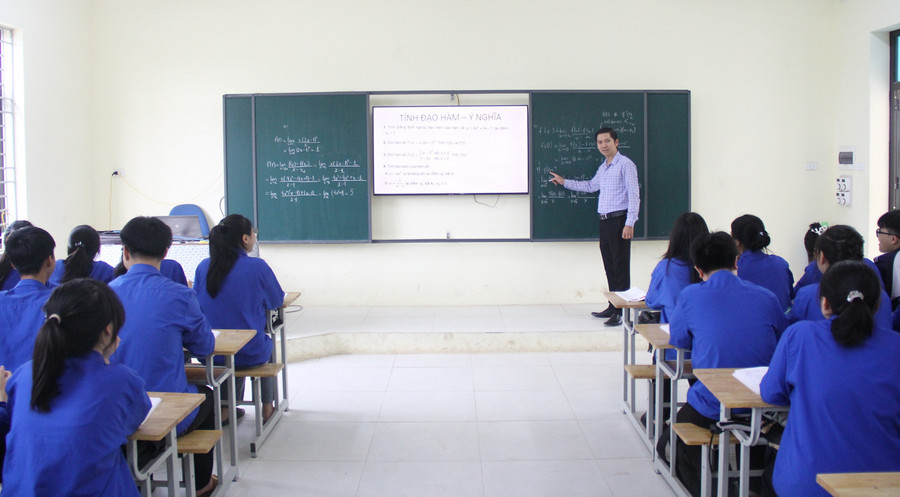
Important adjustment step
In reality, due to the nature of the job, it is not uncommon for teachers to exceed the prescribed working hours. Ms. Tran Thi Hien Hoa - a teacher at Nhan My Kindergarten (Nhan Ha, Ninh Binh) shared that although the regime stipulates that kindergarten teachers work 6 hours/day, she works from 8 to 10 hours almost every day, sometimes even from 6 am to 6 pm. The reason is that requests from parents and the nature of the job force teachers to pick up children early and drop them off late.
According to Ms. Hoa, in the past, there were many cases where teachers exceeded the teaching quota but were not paid extra because they were "stuck" with the regulations in Clause 6, Article 3 of Circular 07. Therefore, the abolition of this regulation in Circular 21 has removed the problem, ensuring fairness in the assignment of tasks as well as in the remuneration regime for teachers. This is considered an important adjustment step, in line with the requirements of implementing the current general education program.
According to Ms. Tang Thi Ngoc Mai - former Deputy Director of the Department of Education and Training of Tra Vinh (now Vinh Long province), the issuance of Circular 21 by the Ministry of Education and Training not only resolves some existing shortcomings in the previous Circular 07, but also represents an important step forward in educational policy thinking.
For many years, the issue of paying teachers for overtime teaching has often been entangled by rigid regulations that do not accurately reflect the reality of teachers' work. Therefore, Circular 21 replacing Circular 07 is noteworthy, contributing to ensuring greater fairness among teachers in the same educational institution, while creating flexibility in management.
“When their rights are guaranteed, teachers will feel secure in their work, have more motivation to innovate methods, increase research and share teaching experiences. From there, the quality of education will be improved in a sustainable way,” Ms. Tang Thi Ngoc Mai acknowledged, noting that this policy does not only stop at the financial aspect but also recognizes and respects the efforts and silent sacrifices of the teaching staff.
In the long term, perfecting the mechanism and treatment policies is an important part of the national human resource development strategy, helping the education sector attract, retain and maximize the capacity of those working in the "human growing" profession.
Sharing the same view, Dr. Hoang Trung Hoc - Head of the Department of Psychology - Education (Academy of Educational Management) said that Circular 21 demonstrates the State's practical concern for the teaching profession. The policies of the Circular not only resolve the long-standing shortcomings, but also affirm the humanistic approach, putting teachers at the center of the policy.
“When rights are guaranteed fairly and transparently, teachers will have more motivation to innovate methods, improve teaching quality, apply technology and develop professional capacity,” Dr. Hoang Trung Hoc emphasized.
In addition to its direct impact on the lives of teachers, Dr. Hoang Trung Hoc believes that the new policy also has a positive ripple effect throughout the industry. When teachers are guaranteed their rights and work in a fair environment, students are the first to benefit from improved teaching quality.
Ensuring teachers' rights
Discussing some new points of Circular 21, a representative of the Department of Teachers and Educational Managers (Ministry of Education and Training) said that in addition to adjusting the conditions for paying overtime wages, the Circular also specifically stipulates the total number of extra teaching hours in a school year for teachers. Accordingly, the total number of extra teaching hours in a school year for each teacher does not exceed 200 hours.
This regulation replaces the previous calculation in Circular 07, which was based on the number of overtime hours according to labor law. This new point is considered more suitable to the characteristics of the profession, helping teachers not to be overloaded, have time to rest and restore their labor force.
Circular 21 also adjusts the formula for calculating overtime pay, applicable to lecturers and managers of educational institutions working at universities, pedagogical colleges, training and fostering institutions under ministries, ministerial-level agencies, government agencies, political organizations, socio-political organizations and political schools under provinces and cities. This regulation ensures consistency with the working regime of lecturers according to Circular No. 20/2020/TT-BGDDT and Circular No. 36/2020/TT-BGDDT.
Notably, Circular 21 has added regulations on payment responsibilities in some specific cases. Accordingly, overtime pay for seconded teachers will be paid by the receiving institution; teachers teaching in inter-schools will be paid by the institution where the teacher teaches. If a teacher teaches at three or more educational institutions at the same time, the payment will be allocated according to the actual number of hours at each institution.
The Circular also clearly stipulates the time for paying overtime wages. Accordingly, the payment is made after the end of the school year; except for cases of retirement, resignation, mobilization or transfer, payment will be made immediately upon decision by the competent authority.
In addition, Circular 21 also supplements the regime for teachers who have worked for less than one school year, which stipulates how to calculate overtime pay corresponding to actual teaching time, ensuring benefits for the team.
For universities, colleges and training and development facilities under ministries, ministerial-level agencies, government agencies and provincial and municipal political schools, Circular 21 empowers them to proactively regulate overtime pay, on the basis of closely following legal regulations and actual conditions.
Circular No. 21 takes effect from September 23, 2025. The Ministry of Education and Training requires educational institutions to urgently develop their own regulations, ensuring implementation from the beginning of the 2025-2026 school year. In particular, institutions need to clearly identify the maximum total number of paid extra teaching hours, prepare a budget estimate and send it to the competent authority for approval, and at the same time serve as a basis for assigning tasks, ensuring the rights of teachers and in accordance with the source of payment.
Some new points of Circular 21:
- Eliminate complicated payment conditions. Accordingly, teachers who teach extra hours will be paid in accordance with reality, ensuring fairness.
- Each teacher does not teach more than 200 extra periods/school year.
- Specify payment responsibilities when teachers teach on secondment or inter-school assignments.
- Payment for teachers who have not worked for a full school year, according to actual teaching time.
Source: https://giaoducthoidai.vn/quy-dinh-moi-ve-tra-luong-day-them-gio-cho-nha-giao-dong-luc-nang-cao-chat-luong-gd-post750626.html



![[Photo] Binh Trieu 1 Bridge has been completed, raised by 1.1m, and will open to traffic at the end of November.](https://vphoto.vietnam.vn/thumb/1200x675/vietnam/resource/IMAGE/2025/10/2/a6549e2a3b5848a1ba76a1ded6141fae)






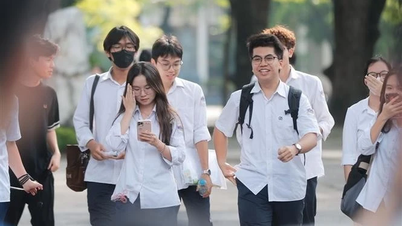

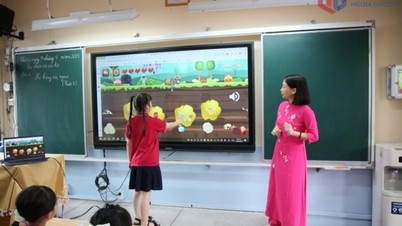




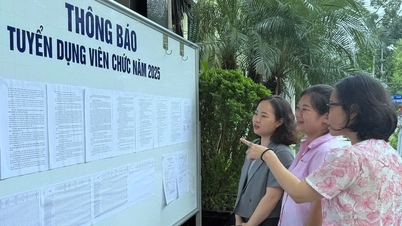














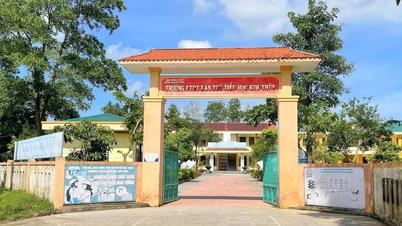





































































Comment (0)